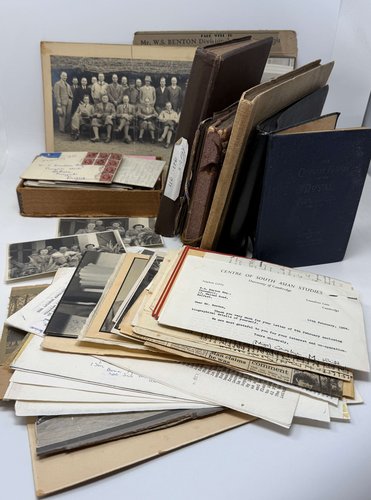

#MC69
Ca. 1860
Watercolour and pencil ca. 51x34 cm (20x13 ¼ in.), The painting is on the artist’s original wash-line mount on the thicker Whatman paper, and in a recent matting. Unsigned. There are some areas of browning on the upper part of the painting, otherwise a very good watercolour.
The watercolour shows a mountainous landscape with gorgeous snowy peaks occupying the upper part of the view, and with a serpentine road and men wearing Indian native dress in the foreground. Most likely an area near Simla (Shimla), a favourite summer refuge for the British in India in the 19th century and the official summer capital of British Raj from 1864.
Located in the north-west Himalayas at an average altitude of 2250 m (7234 ft), Simla was the star of the hill stations - mountainous resorts providing relief to British society from the heat and disease of the plains. "The Himalayan resorts were at an average altitude of six thousand feet and offered magnificent views of range after range of jagged snowy peaks. This region became a venue for leisure activities and the towns in the hills rapidly acquired the character of English villages" (British library).
Drawings of hill stations’ mountainous landscapes quickly became a popular pastime for professional and amateur artists: "These places appeared as a Garden of Eden to the British. Here they found relief from the poverty, disease, dirt and heat of the Plains.., For both men and women, holidays in the Hills gave them unbroken leisure to sit and sketch with worries set aside, among scenes anglicised to look like home.., [Simla in particular was apprehended as a place of] a grander less-tamed nature with dark woods and conifers set against a staggering backcloth of stupendous peaks" (Archer M., R. Lightbown. India Observed: India as viewed by British Artists, 1760-1860. London, 1982).









